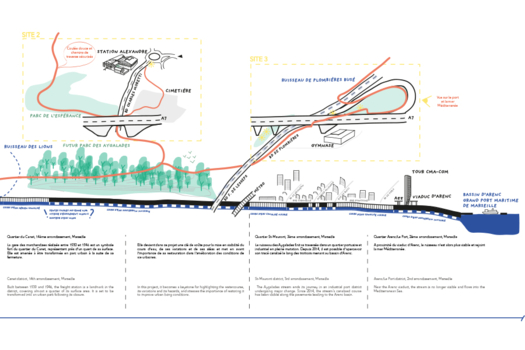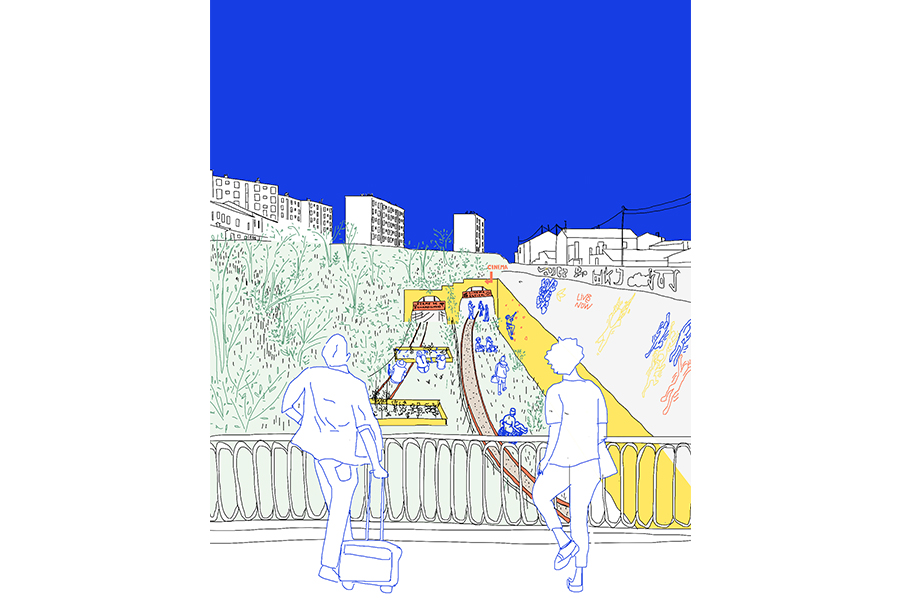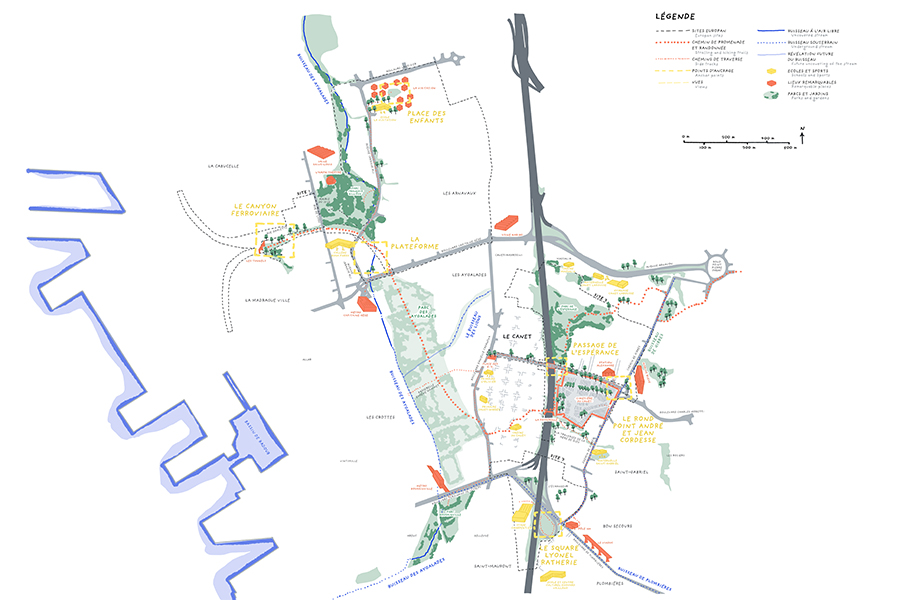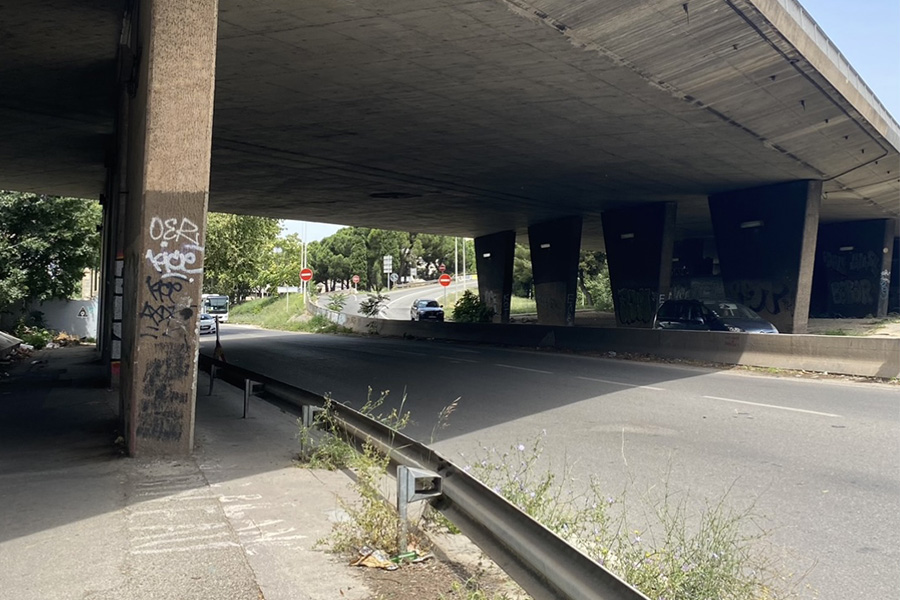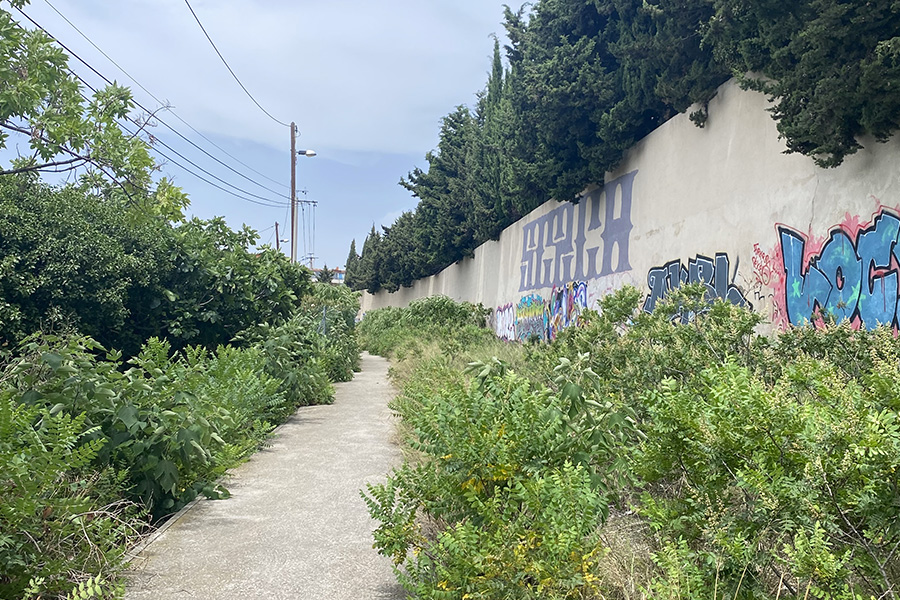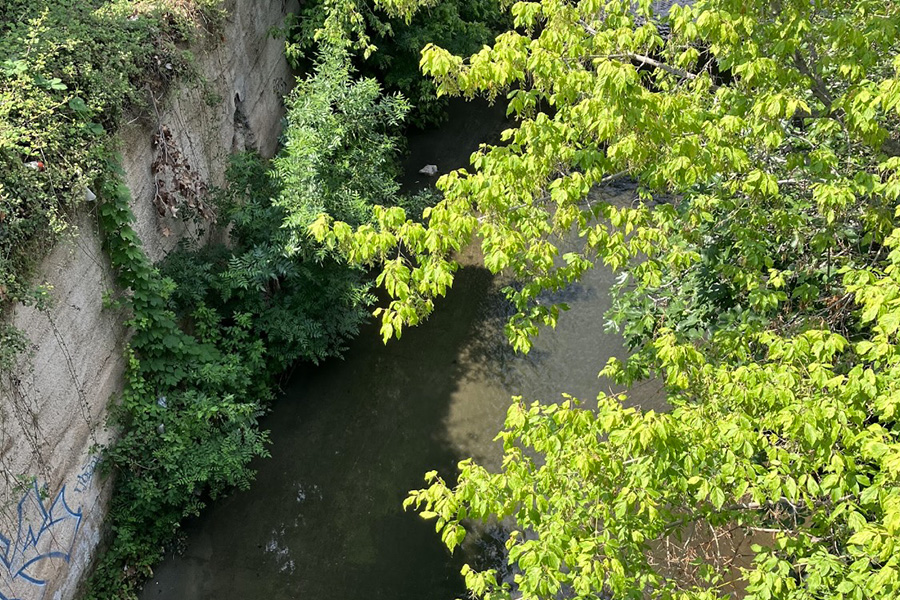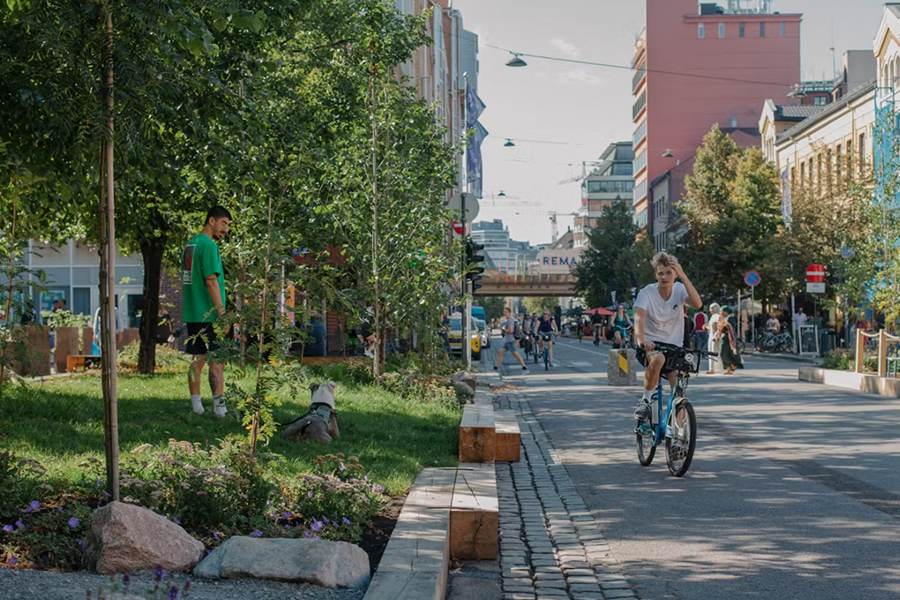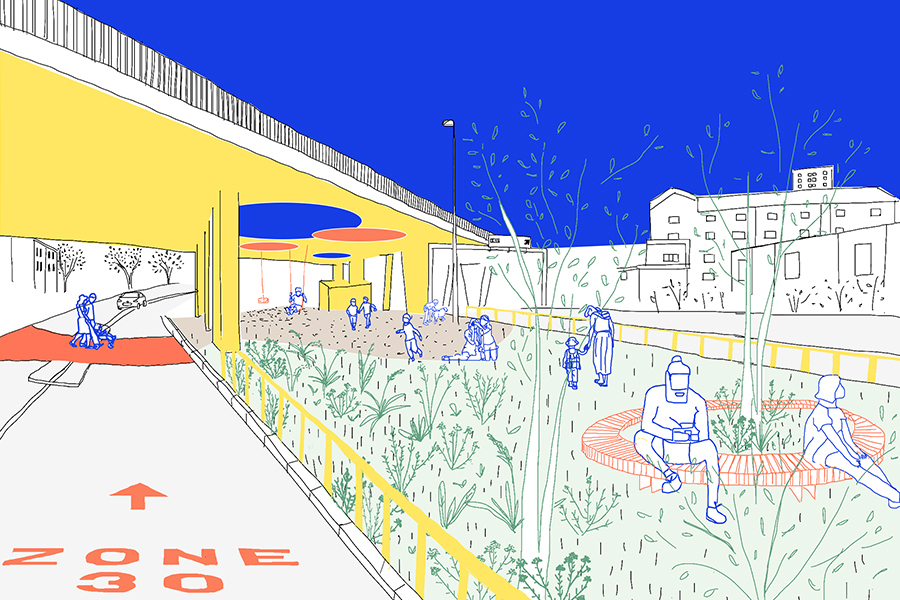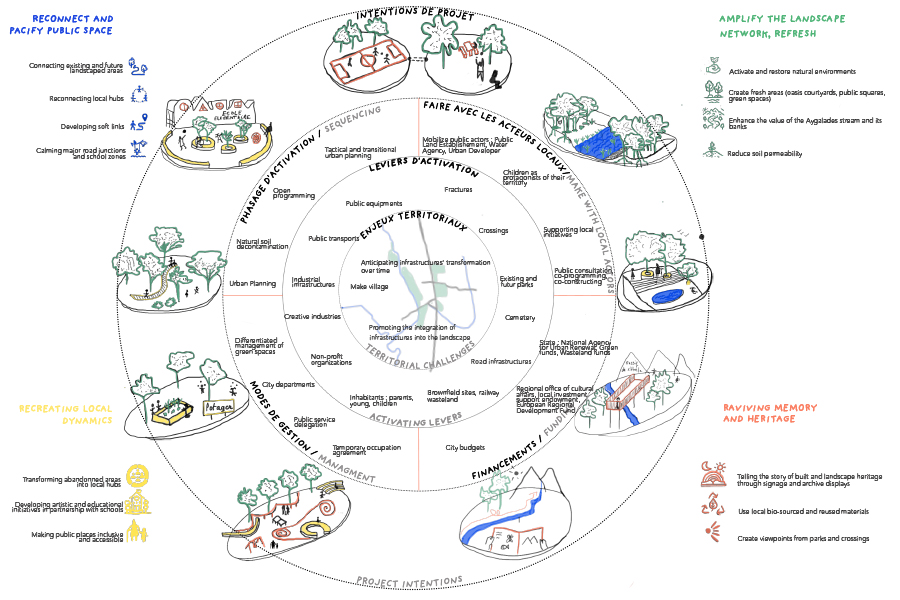L'Enfant, la Ville et le Ruisseau - The Child, the City and the Stream
Marseille (FR) - Mention Spéciale

DONNÉES DE L’ÉQUIPE
Associés: Marc-André Meyer (FR), Anaïs Parcheta (FR), Charlotte Vermeulen (FR) – architectes, Thibault Carcano (FR), Loukia Peneau (FR) – urbanistes, Mathilde Morize (FR) – paysagiste, Julie Vincent (FR) – experte en mobilité
atelier.7lieues@gmail.com
TEAM PORTRAIT
VIDEO (by the team)
INTERVIEW
Click on the images to enlarge
1. How do you define the main issue of your project in relation with the theme “Living Cities Imagining architecture taking care of the milieus”? And in which way do you think your project can contribute to an ecological and/or social evolution?
The "Living City" brings to mind an urban production that is no longer synonymous with fractures but with cohesion between the human and non-human entities that form the territorial ecosystem. In order to highlight the richness of the relationships that precede our intervention, we have based our thinking on the already-existing: equipment, cultural, social and economic systems.
The figure of the child, at the center of our discourse, embodies the hope we pin on the already-existing. The child represents both the vitality of the city - life finds a way, as Dr Ian Malcolm would say - and the vulnerability to which he is exposed. Children are the keystone that guarantees the balance of the area. As such, the attention and care they receive extends to all the entities with which they coexist.
From a programmatic point of view, adopting a child's perspective allows us to rethink the hospitality and accessibility of urban spaces. Thinking about the city from a child's perspective means designing a city that is safe, walkable, refreshing and entertaining. It also means working to preserve the memory of the territory, passing on its heritage, its memory and its traditions, in order to develop a relationship of mutual care between the inhabitants and the hosts.
The precepts of universal design - here applied to children - represent a fundamental paradigm shift. A chain is only as strong as its weakest link: the same applies to urban ecosystems. Paying attention to the most vulnerable entities therefore means ensuring the city's resilience; making it more lively, but also more liveable!
2. How did the issues of your design and the questions raised by the site mutation meet?
Over the next decade, the territory will undergo a profound urban change. The Parc des Aygalades, a future green lung of metropolitan importance, and the accompanying development projects will create a new land dynamic. The aim of this future centrality is to transform a mineral area into a space for refreshment and leisure, at the heart of a network of soft and active forms of transport.
The core of our project is to anticipate these changes and, above all, to ensure that they are accepted by the local population. We propose to support this emergence but to leave the control of its use in the hands of those who shape the area on a daily basis. Each of our proposals - which criss-cross the area in a kind of urban acupuncture - are affordances that local residents will be able to activate and reinvent.
What's more, the prism of childhood allows us to take an open and benevolent approach to a harsh territory. In this way, our project aims to resolve the paradox between the unalterable need to deal with what already exists and the desire to renew the conception - both programmatic and cognitive - of the territory. It is from this conundrum that we have set out to ensure that our interventions - however frugal - have a positive impact. Therefore, our proposals (whether graphic, political or built) are designed to be as accessible as they are powerful.
PROJECT:


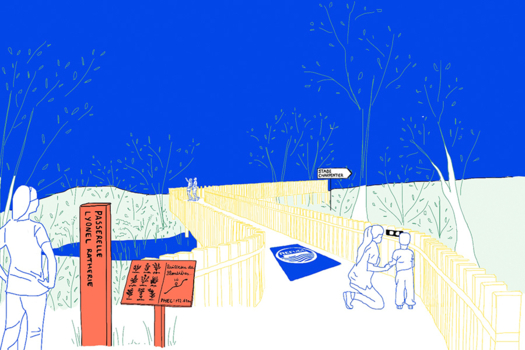
The beauty of the collective is that none of us had dealt with this issue as a whole, but that each of us had dealt with a part of it in the course of our studies or through our professional experience. In fact, the strength of our project lies in the fact that we are responding not only to a single issue, but to a multitude of intertwined issues.
Among the many references that have inspired us are POLAU's Parliament of the Loire; Atelier Lucien's Quartier Libre in Rouen; Bruit du Frigo's peri-urban refuges and Sentier des Terres communes; Atelier Olga's participatory approaches; Atelier Alain Gourdon's flood-friendly neighborhood in Saint Pierre des Corps; Carles Enrich Studio's revitalisation of a forgotten hydraulic infrastructure in Barcelona; concorde architectes-urbanistes' frugal and cheerful urban furniture in Marseille for Europan 12. ... not forgetting all the work carried out by local artists and collectives, in particular the work on the Aygalades stream published by Bureau des Guides du GR2013 and The Gammares.
SITE:



Aware of the issues at stake and the complexity of the players' actions, we have therefore developed our development strategy on the basis of two time horizons: the medium and the long term. Because of this long timeframe, we are aware that the implementation of our project will require long-term local involvement, both with decision-makers and with all those who have an interest in the development of the area. We want to take advantage of this window of opportunity to engage in fruitful discussions because, to be virtuous, our urban planning proposals will have to be negotiated: co-constructed and evolving.
REFERENCES:
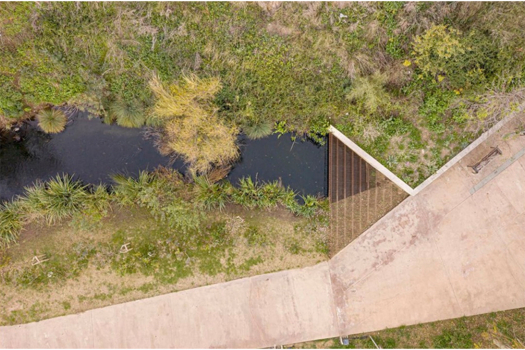


We met during our studies, both at Sciences Po and in architecture schools. Some of us had already worked together from time to time, but the group really came together in the context of the Europan competition. The form it has taken is the result of shared desires: to create a space for urban reflection outside our respective professional confines; to share our areas of expertise; to work together. Each member of the collective is involved in urban and regional issues at different scales, with different skills and different players: water risk, heritage, mobility, the place of children in the city, social issues, landscaping... but all were involved in this project, which provided a platform for pooling our knowledge. We saw the diversity of our backgrounds and experiences as an asset in responding to the complex issues raised by the Marseille site and in formulating a project that addressed as many issues as possible.
6. How could this prize help you in your professional career?
This competition and its fortunate outcome led to the creation of Atelier 7 Lieues, a structure that allows us to work together on the follow-up to this project and to develop our method through other works. The collective now settles in an important place of our respective careers, with each of us incorporating the ideas it generates into our own practice and research. And vice versa.
TEAM IDENTITY
Legal status:
Team name: Atelier 7 Lieues
Average age of the associates: 26 years old
Has your team, together or separately, already conceived or implemented some projects and/or won any competition? if so, which ones?
Not yet.
WORKS:


